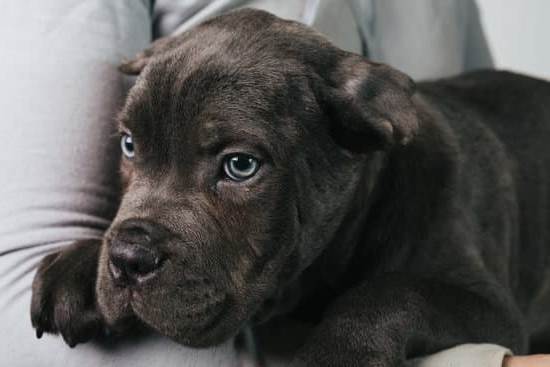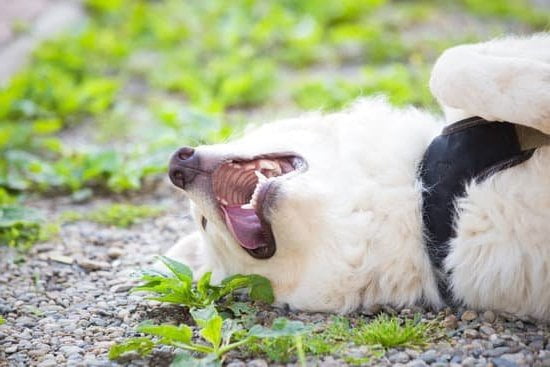Are male dogs harder to potty train than females? This is a common question that many new dog owners ask when they are preparing to bring home a new pet. In this article, we will explore the differences in potty training male and female dogs and provide tips for success. Understanding the behavior differences and the role of hormones in potty training will be key in addressing this question.
When it comes to potty training, many dog owners have observed that male dogs can be more challenging to train than females. However, there are several factors that contribute to this perception, including behavior differences and hormonal influences. By delving into these aspects, we can gain a better understanding of how gender affects potty training and how to overcome the challenges associated with each gender.
It’s important to note that every dog is unique, and individual differences play a significant role in their ability to be potty trained regardless of gender. While some general trends may exist, success in potty training depends on consistency, patience, and understanding the specific needs of your furry companion. In the following sections, we will delve deeper into these topics and provide practical tips for effectively potty training both male and female dogs.
Understanding the Behavior Differences Between Male and Female Dogs
When it comes to potty training, understanding the behavior differences between male and female dogs can play a significant role in the success of training. While both genders can be successfully potty trained, there are some behavioral differences that may impact the training process.
One of the key behavior differences between male and female dogs is marking. Male dogs have a natural instinct to mark their territory, often by lifting their leg to urinate. This behavior can present a challenge when potty training, as male dogs may be more inclined to mark inside the house, even after they have been potty trained. On the other hand, female dogs typically do not engage in marking behavior to the same extent as male dogs.
Another behavior difference between male and female dogs is their level of dominance. In some cases, male dogs may exhibit more dominant behaviors than females, which can make them more resistant to following commands or adhering to potty training routines. Understanding these differences in behavior can help pet owners develop effective strategies for potty training based on their dog’s gender.
To address these behavior differences in potty training, pet owners should consider incorporating specific strategies tailored to the gender of their dog. Additionally, consistency and positive reinforcement are key factors in overcoming behavioral challenges during potty training for both male and female dogs.
- It’s important to establish a routine for taking your dog outside to eliminate
- Use positive reinforcement such as treats or praise when your dog successfully goes potty outside
- Consider using crate training as a method for encouraging your dog to hold their bladder and learn proper elimination habits
The Role of Hormones in Potty Training
When it comes to potty training, the role of hormones in male and female dogs can play a significant role in behavior and training. Understanding how gender affects potty training can help pet owners effectively train their furry companions.
Hormonal Differences
Male and female dogs have different hormonal makeups, which can influence their behavior and potty training. Male dogs produce more testosterone, which may lead to marking behaviors such as lifting their leg to urinate. This behavior can make potty training more challenging for male dogs compared to female dogs.
Effect on Training
The hormonal differences between male and female dogs can impact the potty training process. Male dogs may be more prone to urine marking indoors, even after they have been successfully house trained. This behavior is less common in female dogs, making them somewhat easier to potty train in this aspect. However, it’s essential to note that individual temperament and personality also play a significant role in potty training success, regardless of gender.
Training Strategies
Due to the hormonal differences between male and female dogs, pet owners may need to adjust their potty training strategies accordingly. For example, when potty training a male dog, it’s important to catch him in the act of marking and redirect his behavior by taking him outside immediately. Consistency and positive reinforcement are crucial for both male and female dogs, but understanding the influence of hormones can help owners tailor their approach for better success.
Overall, while male dogs may present specific challenges due to hormonal influences on behavior, with patience and consistent training methods, both male and female dogs can be successfully potty trained.
Tips for Potty Training Male Dogs
Potty training a male dog can be more challenging than potty training a female dog because of their marking behavior. Male dogs have a natural instinct to mark their territory, which can make them more likely to urinate in the house, even after they have been fully potty trained. However, with patience and consistency, it is possible to overcome this challenge and successfully potty train a male dog.
Here are some tips for potty training male dogs:
1. Neuter your male dog: Neutering your male dog can help reduce his instinct to mark his territory. This can make potty training easier and also has other health benefits for your pet.
2. Use positive reinforcement: When your male dog goes potty outside, be sure to praise him and give him treats. This will reinforce the behavior and encourage him to continue going outside.
3. Be vigilant about cleaning up accidents: Male dogs are more likely to return to areas where they have previously marked, so it’s important to thoroughly clean up any accidents inside the house using an enzymatic cleaner designed specifically for pet messes.
By following these tips and staying patient and consistent, you can successfully potty train your male dog and prevent indoor marking behavior. Remember that every dog is different, so it may take some time to find the right approach for your pet. But with perseverance, you can achieve potty training success regardless of your dog’s gender.
Tips for Potty Training Female Dogs
Female dogs can often be easier to potty train compared to males, due to their natural instinct to keep their living environment clean. However, this doesn’t mean that potty training a female dog doesn’t come without its challenges. Understanding the specific strategies for success when potty training a female dog can help make the process smoother and more efficient.
One of the key strategies for successfully potty training a female dog is to establish a consistent routine. This means taking your dog outside at the same times every day, such as after meals, waking up in the morning, and before bedtime. By establishing a predictable schedule, you can help your female dog understand when it’s appropriate to eliminate and minimize accidents indoors.
Another important strategy for potty training female dogs is to use positive reinforcement. When your dog pees or poops outside, praise her enthusiastically and offer treats as rewards. Positive reinforcement helps create a positive association with going potty outside and encourages your female dog to continue exhibiting good behavior.
It’s also essential to closely monitor your female dog’s behavior and body language for signs that she needs to go outside. Some common signs include sniffing around in circles, squatting, or heading towards the door. By paying attention to these cues and promptly taking your dog outside, you can prevent accidents indoors and reinforce good habits.
| Strategy | Description |
|---|---|
| Establish a Consistent Routine | Take your female dog outside at the same times every day |
| Use Positive Reinforcement | Praise and reward your dog when she eliminates outside |
| Monitor Behavior Cues | Pay attention to signs indicating that your female dog needs to go outside |
Common Myths About Potty Training Male and Female Dogs
Male vs. female dogs: are there any significant differences in potty training? Many dog owners believe that male dogs are harder to potty train than females, but is there any truth to this common myth? Let’s explore the misconceptions surrounding potty training male and female dogs.
One of the prevalent myths about potty training male and female dogs is that male dogs are more difficult to train due to their territorial marking behavior. While it’s true that intact male dogs may exhibit more marking behaviors, these tendencies can be managed through proper training and consistent reinforcement. In fact, many dog owners have successfully potty trained their male dogs without experiencing significant challenges related to marking.
Another misconception is that female dogs are naturally easier to potty train because they are less likely to engage in marking behaviors. While it may be true that female dogs are generally less inclined to mark their territory, this doesn’t necessarily make them easier to potty train overall.
Female dogs may have their own set of challenges when it comes to housebreaking, such as being more prone to urinary tract infections or hormonal changes that can affect their bathroom habits.
When it comes down to it, the difficulty of potty training a dog depends on various factors like individual temperament, previous experiences, and consistency in training efforts. Both male and female dogs can be successfully potty trained with the right approach and dedication from their owners. Instead of focusing on gender-based myths, dog owners should prioritize understanding their pet’s unique needs and behavior patterns when embarking on the potty training journey.
| Myth | Reality |
|---|---|
| Male dogs are harder to potty train due to marking behavior | Marking behavior can be managed through proper training |
| Female dogs are naturally easier to potty train | Female dogs may have their own set of challenges in housebreaking |
The Importance of Consistency and Patience in Potty Training
Potty training a dog can be a challenging task, but it is an essential part of owning a pet. Consistency and patience play a crucial role in successfully potty training both male and female dogs.
Consistency Is Key
Consistency is one of the most important factors in potty training. This means taking your dog out to the same spot every time they need to go potty, using the same command, and providing positive reinforcement when they do their business outside. Whether you have a male or female dog, sticking to a consistent routine will help them learn what is expected of them.
Patience Is Essential
Potty training takes time, and it’s important for dog owners to have patience throughout the process. Accidents are bound to happen, but it’s crucial not to get frustrated with your pet. Instead, remain calm and continue with the training process. Yelling or punishing your dog for accidents can actually hinder their progress and cause additional stress for both you and your pet.
Understanding Individual Needs
Every dog is different, regardless of gender. Some male dogs may take longer to potty train than females, while others may be quick learners. It’s important to understand that each dog has their own unique personality and will require individualized attention during the potty training process. By being consistent, patient, and understanding of your dog’s individual needs, you can set them up for success in their potty training journey.
By emphasizing the importance of consistency and patience in potty training, dog owners can effectively navigate the challenges that come with this necessary aspect of pet ownership. With these principles in mind, both male and female dogs can learn proper potty habits and become well-behaved members of the family.
Conclusion
In conclusion, it’s important to debunk the myth that male dogs are harder to potty train than females. While there may be some behavioral and hormonal differences between male and female dogs, potty training success ultimately depends on the individual dog, not their gender. Both male and female dogs can be successfully potty trained with the right techniques, consistency, and patience from their owners.
Understanding the unique behavior and traits of your dog is crucial in developing an effective potty training plan. Whether you have a male or female dog, taking into consideration their specific needs, habits, and temperament will greatly contribute to successful potty training. It’s also important to recognize that every dog is different, with their own learning curves and challenges when it comes to potty training.
Overall, the key to successful potty training is consistency and patience. Regardless of whether you have a male or female dog, being consistent with your training methods and patient with your pet will lead to positive results. By implementing the right strategies and understanding that every dog is an individual with unique needs, potty training can be a rewarding experience for both you and your furry companion.
Frequently Asked Questions
What Is the Hardest Dog to Potty Train?
The hardest dog to potty train is often considered to be the Basenji. This breed is known for being independent and having a strong prey drive, which can make them more challenging to train in general.
Do Boy Dogs Take Longer to Potty Train?
Generally, boy dogs do not necessarily take longer to potty train than girl dogs. However, some people believe that male dogs may be more territorial and prone to marking their territory, which could potentially make potty training a bit more challenging.
Why Are Male Dogs Harder to Train?
Male dogs are sometimes considered harder to train due to their instinctual behaviors such as marking their territory. Their natural inclination to scent mark and be more territorial can make it a bit more difficult when it comes to potty training. However, with consistency and positive reinforcement, male dogs can still be successfully potty trained.

Welcome to the blog! I am a professional dog trainer and have been working with dogs for many years. In this blog, I will be discussing various topics related to dog training, including tips, tricks, and advice. I hope you find this information helpful and informative. Thanks for reading!





